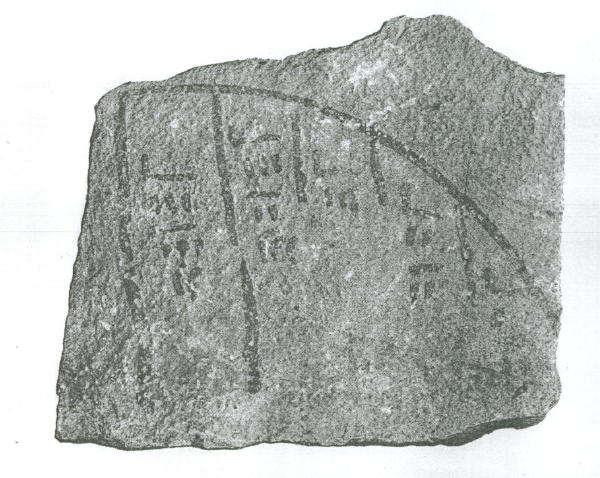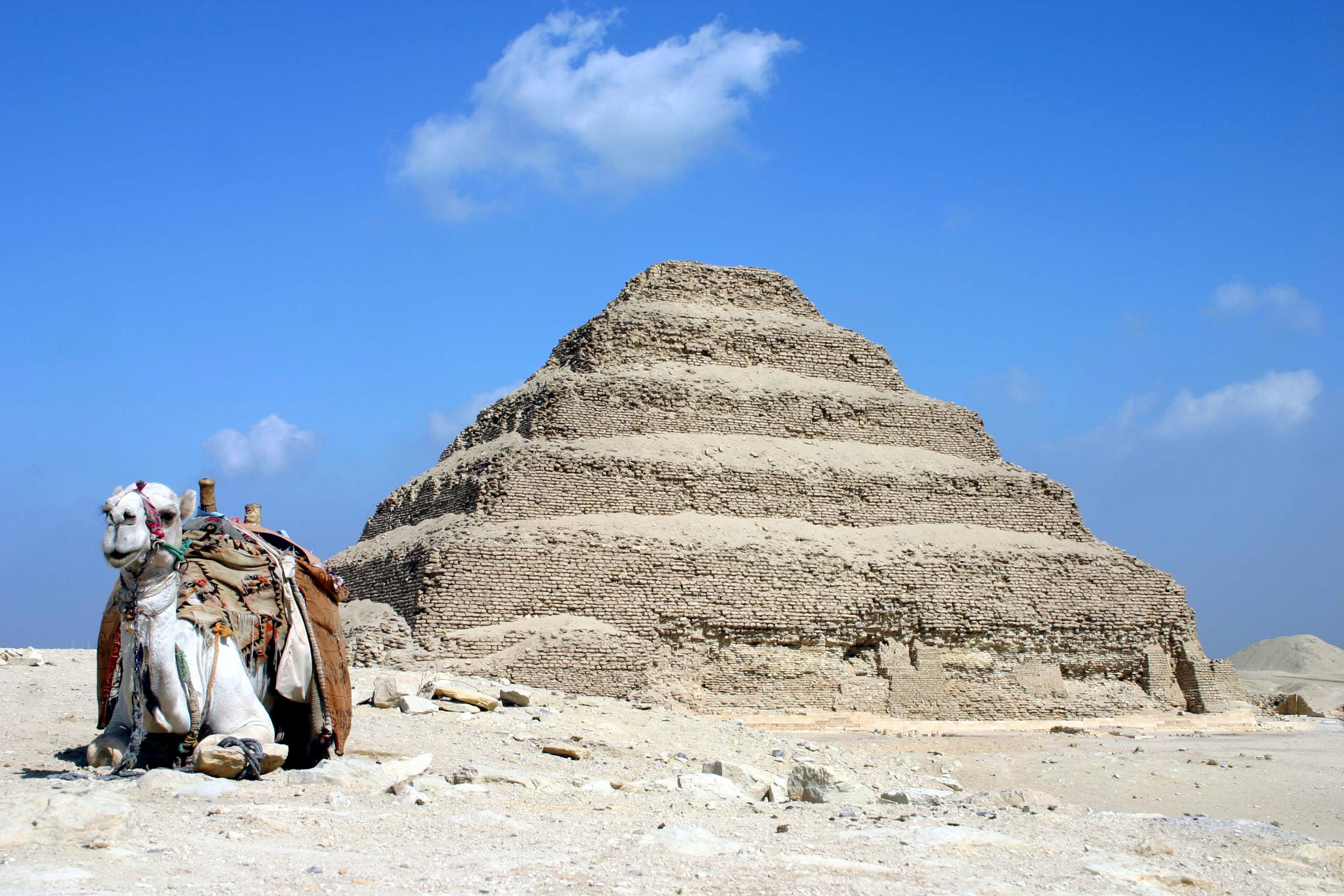Saqqara Ostracon on:
[Wikipedia]
[Google]
[Amazon]
 The Saqqara ostracon is an
The Saqqara ostracon is an

 The Saqqara ostracon is an
The Saqqara ostracon is an ostracon
An ostracon (Greek language, Greek: ''ostrakon'', plural ''ostraka'') is a piece of pottery, usually broken off from a vase or other earthenware vessel. In an archaeology, archaeological or epigraphy, epigraphical context, ''ostraca'' refer ...
, an Egyptian antiquity tracing to the period of Djoser
Djoser (also read as Djeser and Zoser) was an ancient Egyptian pharaoh of the 3rd Dynasty during the Old Kingdom, and was the founder of that epoch. He is also known by his Hellenized names Tosorthros (from Manetho) and Sesorthos (from Euse ...
( 2650 BC).
Excavation
It was excavated in or near 1925 in Djoser's Pyramid in Saqqara, Egypt.
Description
It is an apparently complete flake made oflimestone
Limestone is a type of carbonate rock, carbonate sedimentary rock which is the main source of the material Lime (material), lime. It is composed mostly of the minerals calcite and aragonite, which are different Polymorphism (materials science) ...
. It is 15 × 17.5 × 5 cm. In a few places, small portions of the surface seem to have been scaled away. It appears to date to the period of Djoser
Djoser (also read as Djeser and Zoser) was an ancient Egyptian pharaoh of the 3rd Dynasty during the Old Kingdom, and was the founder of that epoch. He is also known by his Hellenized names Tosorthros (from Manetho) and Sesorthos (from Euse ...
(~ 2650 BC).
Units written about
The ostracon has mentioned several units: *Cubits
The cubit is an ancient unit of length based on the distance from the elbow to the tip of the middle finger. It was primarily associated with the Sumerians, Egyptians, and Israelites. The term ''cubit'' is found in the Bible regarding Noa ...
* Palms
* Fingers
A finger is a prominent digit on the forelimbs of most tetrapod vertebrate animals, especially those with prehensile extremities (i.e. hands) such as humans and other primates. Most tetrapods have five digits (pentadactyly), Chambers 1998 p. 60 ...
The curve
The curve appearscatenary
In physics and geometry, a catenary ( , ) is the curve that an idealized hanging chain or wire rope, cable assumes under its own weight when supported only at its ends in a uniform gravitational field.
The catenary curve has a U-like shape, ...
.
See also
*Ancient Egyptian units of measurement The ancient Egyptian units of measurement are those used by the dynasties of ancient Egypt prior to its incorporation in the Roman Empire and general adoption of Roman, Greek, and Byzantine units of measurement. The units of length seem to have o ...
* Ancient Egyptian mathematics
Ancient Egyptian mathematics is the mathematics that was developed and used in Ancient Egypt 3000 to c. , from the Old Kingdom of Egypt until roughly the beginning of Hellenistic Egypt. The ancient Egyptians utilized a numeral system for countin ...
* Ancient Egyptian technology
Ancient Egyptian technology describes devices and technologies invented or used in Ancient Egypt. The Egyptians invented and used many simple machines, such as the inclined plane, ramp and the lever, to aid construction processes. They used rope t ...
References
Ancient Egyptian science Egyptian mathematics Ancient Egyptian technology Ostracon {{AncientEgypt-stub